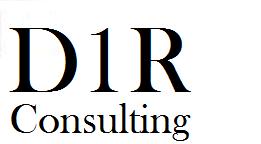Lean Process Improvement
- Details
- Published: Saturday, 21 January 2012 18:28
- Written by David DeCiero
This article will focus on the process improvement portion of Lean. There are three main problems with processes according to lean. These three components should be corrected in order to achieve an optimized process. We will explain each of them.
The first one is “muri,” which means “overburden” in Japanese. This is essentially the burden that the overseer of a process puts on the process. It equates to having a process that is heavy for the workers to perform. This does not mean that the process is broken, but rather that there may be unnecessary steps in place. These non value added tasks add weight to the process. There may have been a valid reason for these steps, but it creates extra work for which no customer would pay.
The second one is “mura” which means “unevenness.” There is a problem in a process when there is unevenness or choppiness instead of a smooth flow. The process may have starts and stops, resulting in inefficiencies and an inability to plan. An example would be in a delivery process. Unevenness would be present when trucks arrive at random periods throughout the day. The delivery process would then start and stop based on this schedule. Clearly this is not desirable, since it would interrupt other work, or the person performing the unloading would be sitting at some times and furiously working at others. Another example would be monthly forecasting of sales. If sales are lower than normal, then production will have to be scaled back the following month. There is an unevenness to the production process, which could result in either overtime or idle workers. Neither of these situations is desirable. It would be much better to have continuous flow, resulting in a fully employed workforce at all times.
The third one is “muda”, which translates to “waste.” This one gets perhaps the most attention as it looks directly at the process steps. There are seven types of waste as identified in Lean. They are:
Transportation – The moving of products unnecessarily. An example would be shipping products to a distributor’s warehouse 50 miles away as opposed to using another distributor that is closer. (Think of the fuel costs!)
Inventory – Excess inventory holds resources, which could be better utilized somewhere else. Just in Time inventory comes from this concept, where inventory is minimized.
Movement – Not having items required for the process near each other requires movement. If a winery is set up such that the bottling machine is located a fair distance from the storage vessels, the vessel or bottling equipment would have to be moved.
Waiting – Anytime a process has to wait, there is a disruption in the flow. If a person or machine is not ready when it is needed, the resultant steps in the process have to wait.
Overprocessing – Doing too much to complete a task. This can be a machine too precise for the process, or simply doing too much in a process. An example would be using a $25,000 corker in a startup winery when a $500 one may be more appropriate
Overproduction – This is creating too much of a product, resulting in excess inventory and disrupting flow
Defect – Any time quality is not created, the product is defective and must be reworked or discarded
All of these wastes can be traced to non-value added activity. That is, the customer would not pay for any of these activities. Therefore, the activities should not be performed. This comes back to the little customer on your shoulder, would she pay you to do what you are doing right now? If not, why are you doing it? This article has hopefully piqued your interest in Lean thinking and how it relates to improving your business. Thinking in this way allows you to see inefficiencies in your process, even when a process may seem to be working well.

